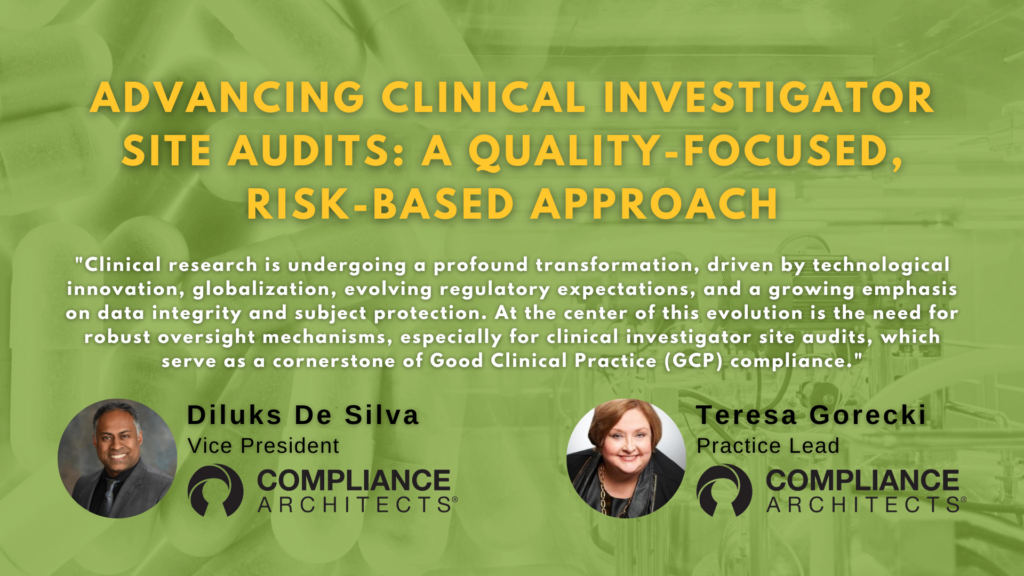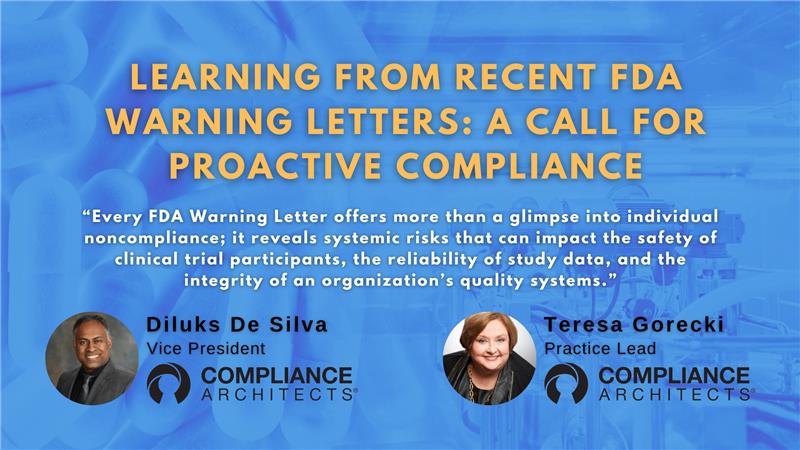This is the third in a series of articles on Quality Culture in the Medical Device Industry.
- Read article 1 here: Why is Achieving a Robust Quality Culture in the Medical Device Industry Challenging?
- Read article 2 here: The Business Case for Achieving and Maintaining a Robust Quality Culture
Table of Contents
What is the Strategic Value of a Robust Quality Culture
The strategic value of a robust quality culture in medical device companies cannot be overstated. I can recall sitting in a Regional Board Meeting in one of my prior roles in the industry, presenting the key points of a Warning Letter our organization had just received from the FDA.
It was an uncomfortable conversation, and our Regional Company Group Chairman was frustrated and angry. We had a history of late and overdue CAPAs for the three Quality Management System (QMS) Elements noted in the Warning Letter.
His frustration and anger during the presentation of the Warning Letter were directed at me. As the Regional VP of Quality and the entire Quality Organization, he was solely responsible for the issues personally.
Out of respect, I allowed the discussion to continue up to a point. He paused to take a deep breath and look around the table at his Regional Board members, and I took the opportunity to respond to his frustration and anger. I provided three critical points to him as follows:
- The Quality Organization was not solely responsible for these issues cited in the Warning Letter. All but one of the QMS Elements were owned and executed by several other Regional VPs sitting around the table. These functions included Manufacturing, Product Design and Development, Regulatory Affairs, and Marketing/Business Development.
- The CAPAs responsible for addressing the gaps in QMS Element design and execution for the issues in each QMS Element were long overdue; requests for extensions made by these functions numerous times were rejected by Quality.
- The entire Regional Board/Leadership Team’s primary focus was the timely launch of new products, including an extensive, profitable line of consumer medical device products. Everything else came second, third, or ….
We incorporated quality strategic objectives into our Regional Business Goals and Objectives. We also had a robust quarterly Quality Management Review process with metrics linked to business impact.
What were we missing?
In my second article, “The Business Case for Achieving and Maintaining a Robust Quality Culture in the Medical Device Industry,” I quoted Francois Sallans, retired Johnson & Johnson Chief Quality Officer, retired Johnson & Johnson Chief Quality Officer, as often saying, “The degree to which quality is embedded in an organization’s culture can mean the difference between success and failure.”
There is no doubt in my mind that this is true.
To complete the commitments made in the Warning Letter Response, we diverted over sixty full-time staff and spent over $10M on consultants to complete all of our 483 and Warning Letter Response Commitments to FDA in 18 months. Our remediation efforts resulted in the withdrawal of some products and significant delays in the production of some products, significantly impacting customer service. Due to the need to divert full-time staff, we delayed the launch of many new products.
Back to the conversation with the Regional Board…
The VP of Finance asked the BIG QUESTION… Why have the CAPAs been delayed? How did this happen?
I provided the answer. I said, “We VALUE and REWARD in this company is new product launch… followed by Customer Service.” I went on to say, “New product launch and high Case Fill Rate are tBusinesslood of our business… But we must include a strong value for QUALITY (and compliance with the FDA requirements) WITH these two most important things.” “It cannot be one or the other; all three… together… quality (and compliance) must be EMBEDDED into everything we do.”
The Company Group Chairman said, “What can I do about it?” I said, “Send a communication to all employees letting them know we value Quality in all that we do and how we execute all of the elements of our QMS, which are equally important to product launch and customer service. Link meeting financial and new product objectives WITH Quality (and compliance) will go a long way to driving a strong quality culture in medical device companies.” “Make the execution of CAPAs as important as a new product launch.”
He asked me to initiate a draft email for him to edit so he could send it before the close of business that day. The email went out that evening.
So… What happened?
The following day, I walked into the cafeteria to get my first cup of coffee, and the entire cafeteria was “buzzing” about the email. People were shocked to learn that the quality and robust execution of our QMS was a high priority combined with and integrated into the new product development and supply chain/manufacturing processes. There were emails about that email for the next two weeks!
What was the impact?
Our company experienced a fundamental shift because our Company Group Chairman and Regional Board clarified the value of quality.
We lived into that commitment and wrote different goals, established performance metrics linked to quality, and held each other accountable for consistently “living” our value for the quality of the design and manufacturing of our new and existing products. Here is what we achieved in two years:
- Late CAPAs came down to less than 10%.
- Effective CAPA reached almost 100% consistently.
- We redesigned and launched existing products, which significantly reduced device malfunctions. For some products, complaints were reduced by more than 75%.
- We were awarded by the top retailers in the industry for customer service and supplier excellence. Our case fill rate was consistently> 98%.
- We achieved and maintained a favorable profile with the FDA and never looked back.
This is not a fairy tale. It is a true story and one I lived. It was one of the most challenging and rewarding parts of my career in the industry.
Recommendations to Medical Device Company Leadership for Establishing a Robust Culture of Quality
Executive Engagement: The CEO and senior executives discuss quality and performance against all objectives, including measures on executing our business processes and QMS.
They establish a value and expectation for quality deeply embedded in the organization’s fabric. New employees understand this immediately because they are “in it and surrounded by it.”
Connected Quality Vision: The company’s vision is embedded in the business strategy, vision, and mission.
Leadership: Managers are rewarded for emphasizing quality. They are also rewarded for their quality in executing the business processes, and QMS is integrated into this process.
Company Boards, Senior Leadership Teams, and Executives drive to achieve on-quality, on-time product launches business, strategic business, and financial goals. They place the same emphasis or focus on the quality of the medical device design and manufacturing process(es). They design out device malfunctions and build in end-user requirements. They do not correct design flaws or hardware issues with end-user training videos online or software.
As the FDA and other global health authorities establish new regulations, management embraces and enables the change. They see regulation changes as opportunities to reexamine their Business and make hard decisions and choices. They look for a competitive advantage for those who are first to meet new regulations or guidelines; they understand that meeting the new expectations will enable rapid new product approvals and launches.
Ownership of Product Quality Complaints and Adverse Events: There are formal mechanisms for collecting and analyzing product quality complaints, device malfunctions, and adverse events.
Leaders care and take ownership of every device malfunction and adverse safety event. They do not justify device malfunctions by “statistics.” <1ppm is not an excuse for a severe device malfunction!
Quality Performance Management Measures in Employee Goals and Objectives: Quality goals are reflected in employee performance evaluations in all organizational functions and levels.
Research and Engineering teams are rewarded for the on-time launch of new medical devices AND for device designs that yield high-quality products with a shallow risk of failure or malfunction. Manufacturing teams are rewarded for a high case or unit fill rate and near-flawless execution of production processes. There is a low rate of deviation or failure.
Diagnosing the Quality Culture with the Right Diagnostic Tool
As I stated in the first article in this series, “Why is Achieving a Robust Quality Culture in the Medical Device Industry Challenging?” Many quality culture surveys are available, but most focus on the QMS itself and not on the observed behaviors and perceived values and norms held within the organization about quality.
Culture is based on values and beliefs and is expressed through behaviors. We can only begin to understand an organization’s values and quality norms by assessing observed behaviors.
To measure Quality Culture in medical device companies, organizations must select a tool that characterizes the observed behaviors regarding all aspects of quality to gain valuable insights into the norms and values of the company. Simply looking at the number of late CAPAs, nonconformances, and product quality complaints is insufficient. Looking at Supplier Quality performance metrics, Case Fill Rate, or achievement of/reduction in cost of goods sold is insufficient.
Most Quality Culture diagnostic tools are focused on quality, supply chain, and other metrics. They do not help you understand the values and norms which shape the culture. They do not allow you to know what must be enhanced within, added to, or edited out of the organization’s beliefs, norms, and values to realize and sustain a high value for quality.
Once a baseline is established, the tool should be used at appropriate intervals to monitor the progress of the actions executed to improve quality culture.
Quality Pulse
The tool that meets the criteria for measuring the quality culture in medical device companies available today is Quality Pulse®. It is a diagnostic tool developed by Compliance Architects LLC that combines data with insights to provide a deep look into an organization’s quality culture.

Conclusion
Aristotle said, “Quality is not an act; it’s a habit.” Companies that ingrain quality into their whole being instead of treating it like a one-off project experience are trusted by the Health Care Practitioners and Patients who use them. However, only by taking a holistic approach, which starts at the top of an organization, can quality genuinely become an integral part of the “brand” of a medical device company.
Ready to elevate your company’s quality culture? Assess your current practices and identify areas for improvement.
Would you like to know more about tools to assess the quality culture in medical device companies?
To learn more about Compliance Architects’ proprietary tool for assessing quality, please contact us using the form below.





